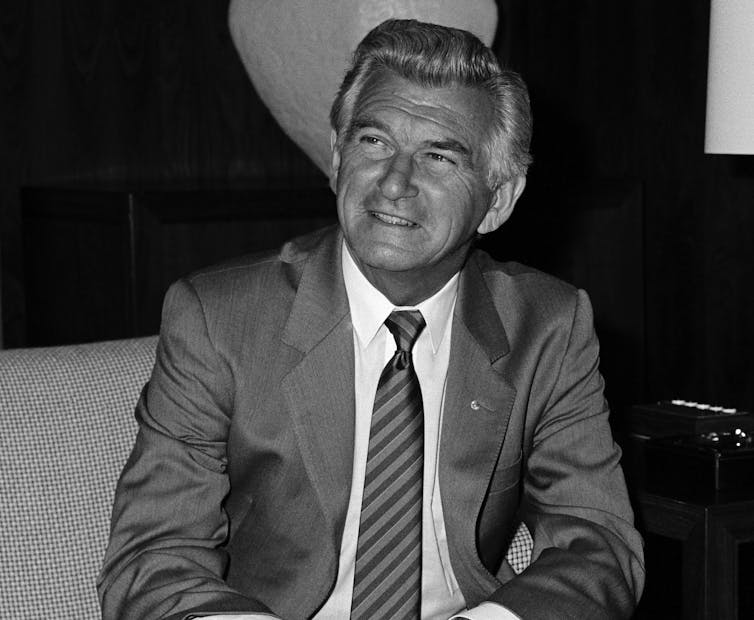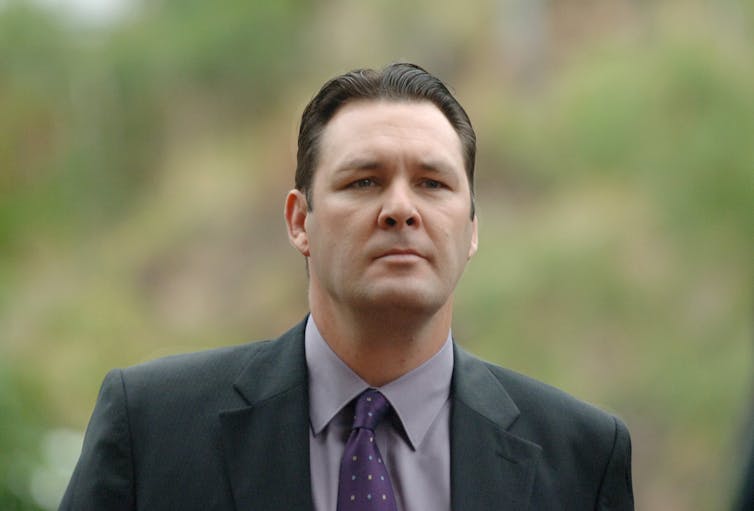This week marks 25 years since the Royal Commission into Aboriginal Deaths in Custody tabled its national report.
With five volumes of research, investigative accounts of 99 deaths in custody, and 339 recommendations, the report was meant to be a blueprint for reducing the disproportionate incarceration of Indigenous Australians and deaths in custody.
But a quarter of a century later, the situation is actually worse.
The impetus
In March 1987, the now-defunct Committee to Defend Black Rights began counting Aboriginal deaths in custody as part of a national campaign. It found one Indigenous person died while incarcerated every 11 days.
The 16th person to die from that date – also the last death before the royal commission was announced – was Lloyd James Boney, a 28-year-old man from Brewarrina in northwest New South Wales. The circumstances of Boney’s death and its aftermath were consistent with the pattern of Aboriginal deaths in custody.
On August 6, 1987, Boney was violently arrested by three police officers for breach of bail. He was found dead 90 minutes later, hanging by a football sock in a police cell.
The Police Internal Affairs Branch conducted the investigation into Boney’s death. No attempt was made to separate Boney’s arresting officers between interviews, providing them opportunities for “collusion and reconstruction”.
The local Aboriginal community was suspicious of the police for their role in the death. They believed it to be physically impossible for Boney to have killed himself the way he died due to his intoxicated state.
But the coroner found Boney had committed suicide with “no suggestion at all of foul play”. This led to widespread protests by the community in Brewarrina, as well as Aboriginal organisations nationally.
Four days later, the prime minister, Bob Hawke, announced a royal commission into the deaths of Aboriginal people in custody. The commission began its work in 1989 (after debates defining its terms of reference, including what constituted custody).

The remit
The commission was asked to examine 99 deaths between 1980 and 1989. It had to consider how and why each person died, including underlying social factors.
The total included 63 people who had died in police custody and 33 in prison, including three in juvenile detention; 88 males and 11 females; and an age range of 14 to 62 years. Half of these people had been removed in childhood from their families by child protection agencies.
The commission investigated each life and the circumstances of each death. It described previous police and coronial inquiries into the deaths as “perfunctory” and “narrow” in focus.
Its final report, tabled on April 15, 1991, found Indigenous people were more likely to die in custody because they were more likely to be in custody. Their over-representation in police and prison custody was described as “grossly disproportionate”.
The commission saw the issue as twofold: problems in the criminal justice system; and the reasons for Indigenous people coming into contact with that system. But its dichotomy is false.
The reason many Indigenous people come into contact with the criminal justice system – as identified by the commission itself – is due to how that system defines crime, polices Indigenous people and seeks to “protect” them by placing them in custody (for intoxication, as an example).
Nonetheless, the commission sought to explain Indigenous contact in terms of disadvantage and disempowerment. And many of its recommendations sought to promote Indigenous self-determination in order to strengthen communities and provide services more appropriate to the needs of Indigenous people.
Prejudice and a lack of care
In its first task, the commission examined each stage of the criminal justice system. It found Indigenous disadvantage arose from:
prejudicial policing, especially for minor crimes relating to public order;
the police tendency to caution, charge and arrest Indigenous people, rather than issue warnings or court attendance notices;
police and courts not granting bail to Indigenous people; and
courts sentencing Indigenous people to prison rather than handing down non-prison sentences.
Accordingly, a series of the commission’s recommendations sought to decriminalise minor offences, uphold the right to bail and ensure arrest and imprisonment were sanctions of last resort.
The commission also found incidents of a lack of care of Indigenous people in custody, as well as police mistreatment and abuse.
Commissioners found sufficient evidence to instigate disciplinary or prosecutorial processes against officers for eight of the investigated deaths. They recommended these cases for referral to the police commissioner to determine appropriate action. No prosecutions ensued.
The first prosecution of a police officer was for the 147th death in custody following the royal commission. In 2007, Sergeant Chris Hurley was charged with causing the death of Mulrunji Doomadgee on Palm Island. He was controversially acquitted.

Changing the paradigm
Indigenous incarceration and police custody rates have actually increased since the royal commission tabled its report.
In 1991, Indigenous people constituted 14% of the prison population (1,100 for every 100,000 Indigeous people in the national population). Today they make up 27% (2,300 for every 100,000). There has been an equivalent increase in unsentenced Indigenous prisoners in remand.
Despite the misconception among some criminologists that the commission’s recommendations were implemented and failed, its suggestions regarding decriminalisation of minor offences and self-determination were never realised.
Minor public order offences, such as offensive language, continue to be punished. Police powers in relation to public drunkenness and arrest have been extended. The right to bail has been undermined with increasing exceptions (for property offences as an example). Maximum prison penalties and mandatory prison sentences have escalated.
In relation to self-determination, the tendency of the federal government since the mid-1990s has been to: increasingly mainstream services for Indigenous people; defund Indigenous-run organisations that have expertise in Indigenous safety and well-being; impose top-down policies; and penalise vulnerable Indigenous people (by removing children from their families, criminalising youth and women victims of family violence, and locking up the mentally ill).
The commission’s lessons are more pertinent today than they were in 1991 because the majority of its recommendations remain unimplemented. Its report called for a holistic and systemic approach, but there have only been ad-hoc and provisional piecemeal changes. Unsurprisingly, they’ve had negligible overall effect on reducing deaths in custody.
The 25th anniversary of the Royal Commission into Aboriginal Deaths in Custody reminds us that nothing less than a paradigm shift will ensure that we won’t be marking another anniversary with even more Aboriginal deaths in custody, as we do this one.
This article is part of a special report marking the 25th anniversary of the Royal Commission into Aboriginal Deaths in Custody. Check out the rest of the package.

